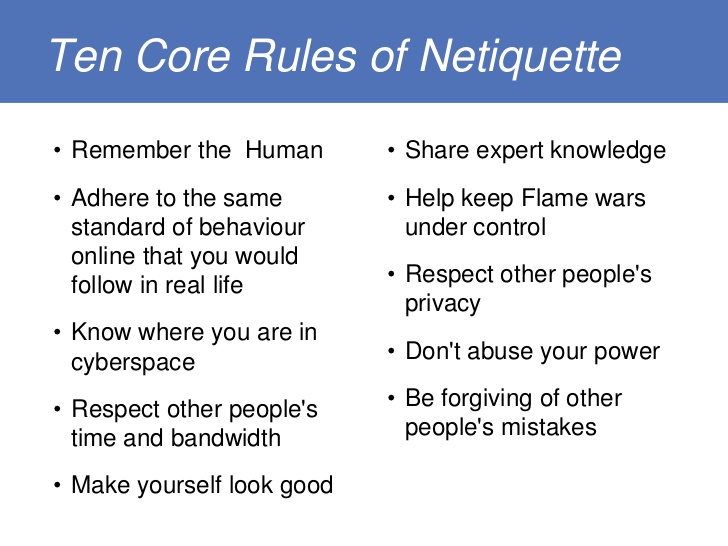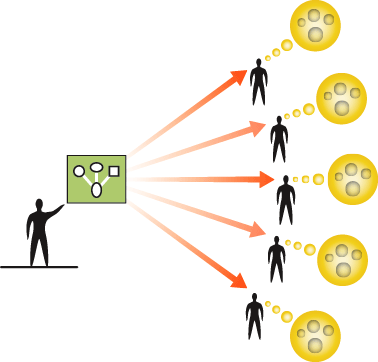Rules? What Rules?
We are told to follow rules are whole lives - no cheating...don't swim within 30 minutes of eating...drive the speed limit." Rules are meant to protect us and with the rapid growth of social media, online courses and internet/email use comes an additional set of rules, meant to protect you and guide you in representing yourself in a professional and mature way when communicating online.
How's online communication different?
For many of you, online environements may be a new experience. Others may feel savvy in communicating with friends in social media or in online gaming. Regardless of the situation, you want to be sure to maintain a high level of apptitude when communicating online. Online environments present unique challeges that we do not have to address in face-to-face communication. Here are a few differences:
NO Physcial Cues - There is no nodding in agreement, body language or facial cues to help guide a conversation. We tend to rely heavily on tone of voice to guage a person's acceptance of what we are saying. Without these forms of feedback, it becomes harder to interpret a person's intent when we only have text to go on.
Asychronous - With the exception of chat or tools like video conferenceing, communication online is typcally asnychronous. This means that there will most likely be a delay in receiveing a response. Emotions can rise if there is to long of a delay and you might think "why haven't they responded?" The opposite can also happen. A person could respond to quickly, not thinking or taking time to formulate a complete and clear response. This can also interrupt the flow of conversation and lead to group dynamics issues.
Anonymous - Sometimes communication online is anonymous. Take peer reviews for example. Many instructors have students anonymously peer review work of other students. It becomes critical to write reviews that are clearly orgnaized and thoughtful. The person receiveing the review has no way of following up for clarification on what is written.
What's written is permenant - Unless face-to-face dialouge between two people is recorded, there is no permenant record of what is said. Online is mostly text based communication and kept. This is great for going back and reviewing content or clarifying statements, but this also means that communicating online requires a higher level of accountability for the words that you submit!
Thankfully, there are some really great rules that you can follow to mitigate miscommunication issues from occurring in online environments. Here are the 10 Core Rules of Netiquette that we will be exploring in this lesson.

Review
This will be a quiz question about how online communication differs from face-to-face



